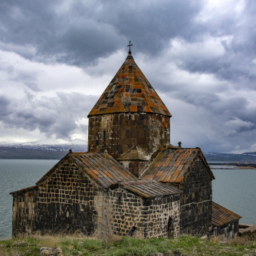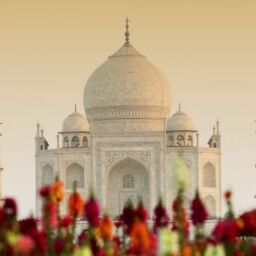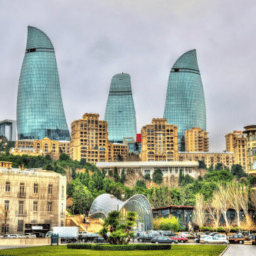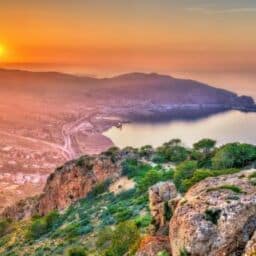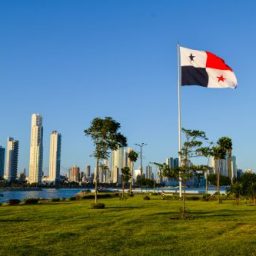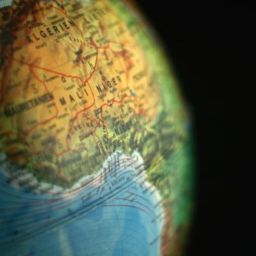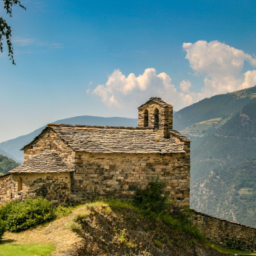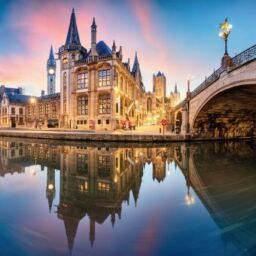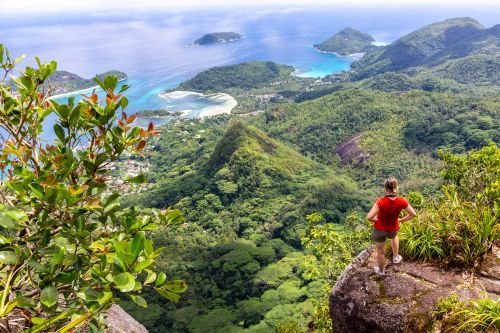

When we think of Seychelles, we immediately visualise powdery-soft white sand beaches lapped by crystal clear waves and surrounded by palm trees… Basically, a true heaven on earth! No wonder so many people dream of spending their holidays there.
In today’s article, we’ll cover everything you need to know about Seychelles before you start planning a trip to this charming place. What languages do the people of Seychelles speak? When is the best time to go there? And what tourist attractions you simply can’t miss? Read on to find out!
Contents
Seychelles – a handful of information
Seychelles, officially the Republic of Seychelles, is an archipelagic state in the Indian Ocean, located 1,600 kilometres east of Kenya and northeast of Madagascar. The main cities of Seychelles are the country’s capital Victoria, called the smallest capital city in the world; Anse Boileau, Grand Anse Mahe and Takamaka. Seychelles is a republic with a total population of just under 94,000. The president, elected by popular vote for a five-year term of office, is the head of state and the head of government. The current president (as of 2023) is Wavel Ramkalawan.
Geography
Seychelles consists of 115 islands of volcanic origin with a coastline that is 491 kilometres long. It is the smallest of African countries, both in terms of area and population. The two main archipelagos of the country are the mountainous Outer Islands, located in the north and made of alkaline volcanic rocks; and the Inner Islands, numerous and only slightly rising above the surface of the ocean, coral islands. The largest island is Mahé, with an area of 144 km², and it is where about 80-90% of all Seychelles citizens live. The other larger islands are Praslin (38.8 km²), Silhouette (20.7 km²) and La Digue (10.4 km²).
The islands are located in the equatorial humid maritime climate zone. The average air temperature varies between 24 and 30 °C throughout the year.
The climate of Seychelles ensures a great diversity of fauna and flora. With as much as 42% of the territory allocated for conservation, the islands are home to many protected species, some of which are unique endemic specimens.
Economy
The most significant industry in Seychelles is tourism, which began in 1971 with the opening of Seychelles International Airport, and has completely transformed the economy of the islands. The vast majority of the Seychelles population is employed in the service sector, less than 20% work in industry and only 10% are employed in agriculture. Seychelles exports vanilla, tobacco, cloves, cinnamon, guano, and coconuts. There are many products that must be imported into the country because local production is not able to meet the nutritional needs of all inhabitants.
History of Seychelles
Originally uninhabited, the first visitors of the islands of Seychelles were the Arab traders in the 10th century. At the beginning of the 16th century, the islands were discovered by the Portuguese, as well as became a haven for European pirates. In the mid-18th century, France annexed the archipelago and named it after Jean Moreau de Sechelles, finance minister at the court of King Louis XV.
Shortly after that, the first settlers accompanied by their slaves began to arrive at the islands. In 1794, Seychelles came under British occupation, and their affiliation was legally sanctioned by the Treaty of Paris in 1814. Despite this, the French language and culture remained dominant among its inhabitants. From 1903, Seychelles gained the status of a colony with its own governor. In 1964, the first national political parties were established: the Seychelles People’s United Party and the Seychelles Democratic Party, and seven years later the British began to gradually increase the participation of people from Seychelles in the authorities of the colony.
A breakthrough in the history of Seychelles came in 1975, when it gained autonomy, and a year later also independence within the Commonwealth of Nations. Over the next few years, Seychelles faced political chaos, including a bloodless coup d’état and a thwarted invasion attempt. Under pressure from the opposition, the government began the democratisation process in 1991, and two years later a new constitution was introduced, and parliamentary and presidential elections were held. Seychelles’ legal system is based on English common law and French civil law. Every citizen over the age of 17 has the right to vote.
Demographics
The population of Seychelles consists of Creoles, i.e. descendants of French colonists, constituting the vast majority of the inhabitants of the archipelago (as much as 89%). Other ethnic groups on the islands are primarily Indians and Malagasy originating from Madagascar. The average annual population growth is 0.43%.
Languages of Seychelles
When you decide to fulfil your dream of travelling to an exotic new place, one of the first items on your to-do list should be to find out what language the locals speak, and to write down some basic phrases somewhere to have at hand. This will allow you to be prepared for emergencies if you need to ask someone for help during your trip.
Seychellois Creole
The official language of Seychelles is Seychelles Creole. Perhaps the name itself does not ring a bell – but Creole languages are simply a group of ethnically unrelated languages that arose on the basis of European languages mixed with the speech of indigenous peoples during the colonisation era. Seychelles Creole was created on the basis of French, it also contains elements borrowed from other languages, such as Bantu, Malagasy, and Tamil.
French
French is considered the most prestigious language in the Seychelles. It was used primarily by the Catholic Church.
English
English is the third language of the Seychelles and has been gaining popularity in recent years, especially among the younger generations. It is primarily the language of business, and most residents know it well enough that English-speaking tourists can feel safe during their trip.
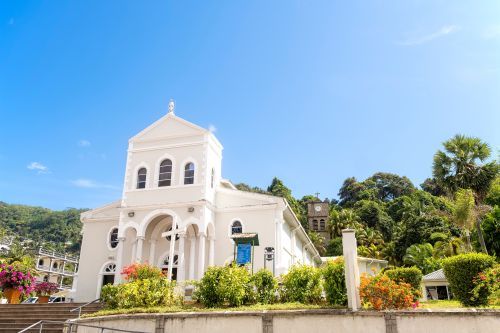
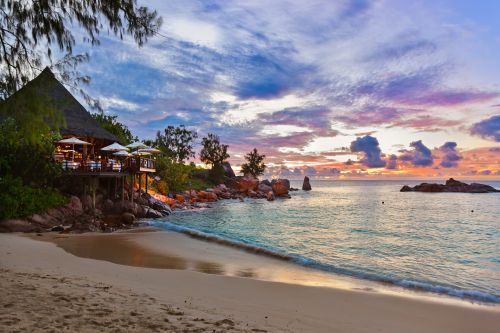
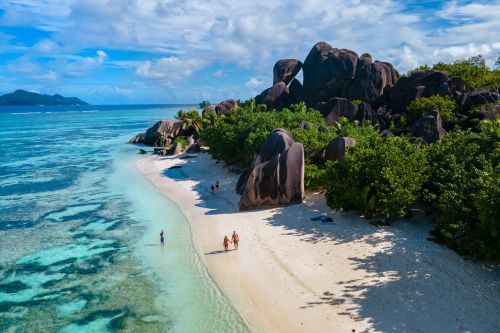
Travelling to Seychelles – what you need to know
Below you will find a handful of essential facts and pieces of advice that will be useful to anyone planning a trip to the Seychelles.
Visa and necessary documents
A visa is not required to enter the Seychelles. However, all travellers must apply for entry through the Travel Authorisation (TA) platform. During the application process, passengers must submit a copy of their passport, return airfare and confirmed accommodation bookings for their entire stay. Passengers who fail to provide TA documents will not be allowed to board a plane for Seychelles.
Healthcare and insurance
There are no serious health risks in Seychelles. There is no obligation to vaccinate before travelling, but vaccination against infectious diseases such as typhoid, tetanus, diphtheria and hepatitis A and B is recommended. There are no malaria-carrying mosquitoes in Seychelles, so there is no risk of contracting this disease.
Travellers are recommended to purchase health insurance before the trip. On the largest islands of the archipelago, i.e. Mahé, Praslin, Silhouette and La Digue, there is no problem with access to healthcare.
Security
Seychelles is considered a generally safe place for tourists. It is recommended to exercise the usual caution, i.e. avoid carrying valuable items, important documents and a large sum of money with you, try avoid going out during nighttime and do not leave things unattended, especially on the beaches. Due to strong sea currents, you should avoid swimming in the ocean on secluded beaches.
Currency
The currency of Seychelles is the Seychellois Rupee (SCR), and its current exchange rate can be checked on the website of the Central Bank of Seychelles.
Travelling around
There are no restrictions on travelling around the country. The means of transport available on the islands are taxis, buses and rental cars. Seychelles has no railways. In order to rent a car, you must have a valid driving licence issued in the European Union or an international driving licence. Seychelles follow left-hand traffic laws.
To travel between the islands of the archipelago, you can use the ferry or local flights. Interestingly, their cost is quite similar.
When is the best time to go to the Seychelles?
Seychelles is a year-round destination – the weather is favourable for travellers in each of the months. However, we need to consider what attractions we care about the most. For example, if you are planning diving or snorkelling, you should consider planning your trip for April, May or between October and the first half of December, because that is when the water is the clearest.
Tourist attractions
A trip to Seychelles is an unforgettable experience. No wonder that the archipelago has been attracting crowds of travellers for years, especially newlyweds who want to spend their honeymoon there. Seychelles are more than the emerald ocean, heavenly beaches and year-round sun. Every island offers unique and endless possibilities, so it is essential to plan your trip and all the activities.
Perhaps the greatest attraction of Seychelles is the extraordinary wildlife. During your trip you may be able to see some unique species of animals, such as the rare Seychelles black parrot or giant Aldabra tortoises; as well as plants, for example lodoicea, commonly known as coco de mer or sea coconut.
The island of Mahé, in addition to sixty wonderful beaches, including the famous Beau Vallon beach, also offers several places where tourists can experience Creole culture, such as Botanical Gardens, Mission Lodge and Victoria Market. Within the National Park there is also the highest peak of the archipelago – Morne Seychellois.
The unusual flora and fauna can also be admired during a hike along the trail within Vallée de Mai Nature Reserve, a nature park and UNESCO World Heritage Site on the Seychelles’ second largest island of Praslin. You also shouldn’t skip the Praslin Museum, where you can learn more about the history, culture, and wildlife of the islands.
And if you want to bring back amazing photos from your holiday, you can not forget about Anse Source D’argent beach, one of the most photographed beaches in the world!
Languages of the world with Skrivanek
We hope that our article about Seychelles has encouraged you to learn more about this extraordinary place, and maybe even to plan a trip there.
If you would like to speak with the people of Seychelles in French, but you are not fluent enough to speak freely, it is not too late to learn! With our Skrivanek language school you can learn languages on a stationary or remote course that is tailored to your individual needs.
If you are interested in translation services, our experienced team is there to help you. We provide translation from and into more than one hundred languages. Please do not hesitate to contact us anytime for further information.







